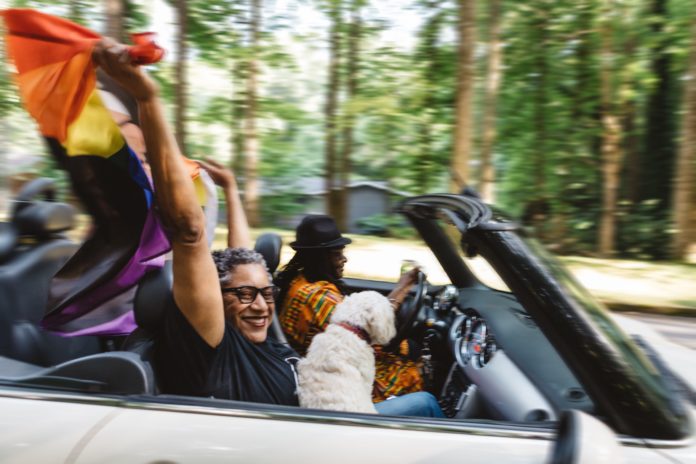/lesbian-couple-pride-car-33a3b51bd19c4ec4ad73a93af61f15d4.jpg)
Those self-identifying as lesbian, gay, bisexual, transgender and queer (LGBTQ) are underinsured for life insurance coverage, a position that financial professionals say leave their families at a greater financial security at risk.
Key Takeaways
- LGBTQ Americans have less life insurance coverage than the general population, according to a new LIMRA survey.
- Only 38% of LBTQA adults surveyed say they have life insurance coverage, representing 7.6 million adults of 20 million adults. Overall, half of Americans own life insurance.
- 43% of LBTQA consumers are more likely to buy life insurance within the next year compared with 37% of the general population.
- The Covid-19 pandemic prompted one in five LGBTQ consumers actually to purchase life insurance coverage, not just think about it, a higher rate than the general population.
- Finances in general remain a big concern in LGBTQ populations 48% surveyed are worried about what will happen to them if they become ill or injured, but only 14% say they own disability insurance.
LGBTQ life insurance policy ownership trails general adult population
LGBTQ consumers have a life insurance policy ownership rate of 38%. This is lower than the rate for all consumers, which stands at 50%, based on a survey conducted and analyzed by Connecticut-based LIMRA and its affiliated nonprofit, Life Happens, released this week.
Yet the disparity in life insurance coverage is a concern. LIMRA said in a press release that 68% of LGBTQ surveyed think they should own life insurance. If the primary wage earner in the family died, 45% of those making financial decisions in LGBTQ households acknowledged their families would struggle financially within six months, while 30% felt they would face hardships in just three months.
The pandemic triggered higher life insurance uptake among LGBTQ consumers
Although LGBTQ Americans are less likely to hold life insurance policies compared with the general population, they said that the Covid-19 pandemic spurred them to buy life insurance at a higher rate than the general population market segment, according to a recent survey by life insurance professionals. Despite their lower insured status, one in five of these LGBTQ consumers surveyed said that the Covid-19 pandemic drove them to buy life insurance—this is five points higher than the general population, LIMRA said.
The LGBTQ community is already planning for financial coverage future
Despite their lower coverage rate, more than a third of the LBTQ survey participants say they are working with a financial professional while another 26% are planning to consult one. A financial advisor could be focusing on the retirement planning and investment desires and concerns of respondents, though.
In the next year, there could be more uptake. According to LIMRA, 43% say they are likely to purchase coverage within the next year, compared with just 37% of the general population.
With 20 million LGBTQ American adults in the U.S., a 38% rate of coverage represents 7.6 million adults. Of those surveyed, half, representing 10 million people, said they need coverage or actually need more coverage.
Multiple financial concerns, hurdle facing LBTQ consumers
The reasons given by the LGBTQ respondents for not buying life insurance stems from the perception it is too expensive and that it competes with other financial priorities, according to LIMRA. In addition, the LGBTQ population earns less and struggles more with covering expenses, according to reports cited by actuaries.
The areas where LGBTQ respondents put their money for financial planning purposes reveal heightened money worries. LIMRA found that LGBTQ Americans are more likely to reveal worries about finances in many areas compared with the general population.
These concerns include supporting themselves after a disability or injury and having enough money on hand for an emergency. Paying monthly bills, adequacy of retirement funds, credit card debt and their home mortgage also topped the list of financial concerns for LGBTQ consumers. Other financial concerns include paying for a child’s education and burial and funeral expenses
Less than half, but a hefty amount—over a third to almost half — of LGBTQ respondents have financial concerns around illness, injury, disability and long-term care services, but LIMRA found three-quarters had overestimated the cost of life insurance.
Many LGBTQ consumers go online for financial planning
The organization states that lack of knowledge remains a hurdle for the LGBTQ market, as well as others. The LIMRA survey revealed that only a fourth of LGBTQ Americans felt they were well-informed and knowledgeable about life insurance. However, the Internet is a resource and transactional hub for many when they do seek information.
LIMRA also found that LGBTQ consumers are a lot more likely to buy life insurance online —41% — than the general population market, which looks to the Internet to place life insurance about 30% of the time.
The LGBTQ community turns to social media to learn about financial products, citing YouTube, Facebook and Instagram as their top platforms. The community surveyed who identified as LGBTQ, though, are younger, as Generation Z adults (current Gen Z adults were born in 1997-2004) are twice as likely to identify as LGBTQ as Millennials (1981-1996) and four times as likely as Generation X, according to LIMRA.
The online panel surveyed adult consumers who are financial decision makers in their households and LIMRA analyzed responses to show trends in market segments.








